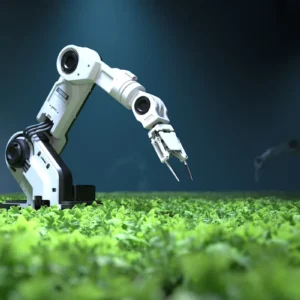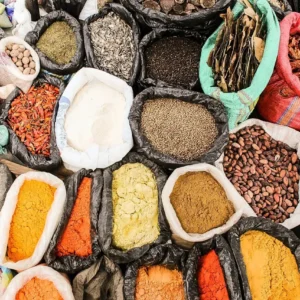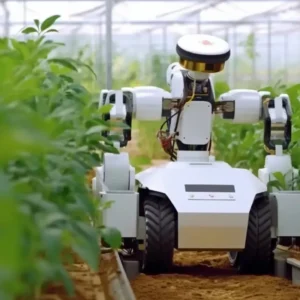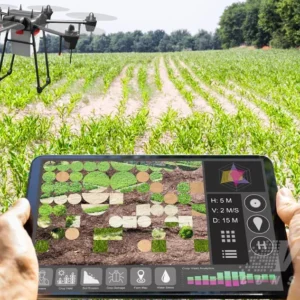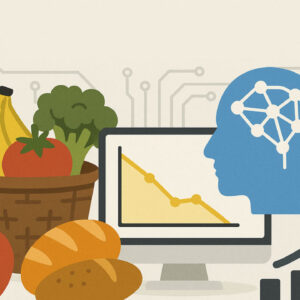The world of gastronomy is undergoing a remarkable transformation with the advent of Food Innovation with Artificial Intelligence. This cutting-edge technology is revolutionizing every aspect of the culinary journey, from the fields where ingredients are sourced to the moment of consumption. With AI, we are witnessing a fusion of data-driven insights and culinary creativity, elevating the art of cooking to new heights.
AI is the catalyst that empowers chefs and food enthusiasts to explore new dimensions of taste, texture, and presentation. By analyzing vast datasets and patterns, AI provides a wealth of knowledge, offering insights that transcend traditional kitchen intuition. This innovative approach to food creation promises a future where culinary experiences are tailored to individual preferences, and the possibilities for culinary innovation are limitless.
Understanding the Landscape of AI-Powered Food Innovation
The realm of food innovation is being revolutionized by artificial intelligence, offering a plethora of opportunities for creativity and efficiency. Food Innovation with AI is a game-changer, transforming the way we farm, cook, and experience culinary delights. With AI, farmers can optimize their practices, leading to more sustainable and productive agriculture. Kitchens are becoming smarter, equipped with AI-powered tools that enhance cooking experiences and streamline processes.
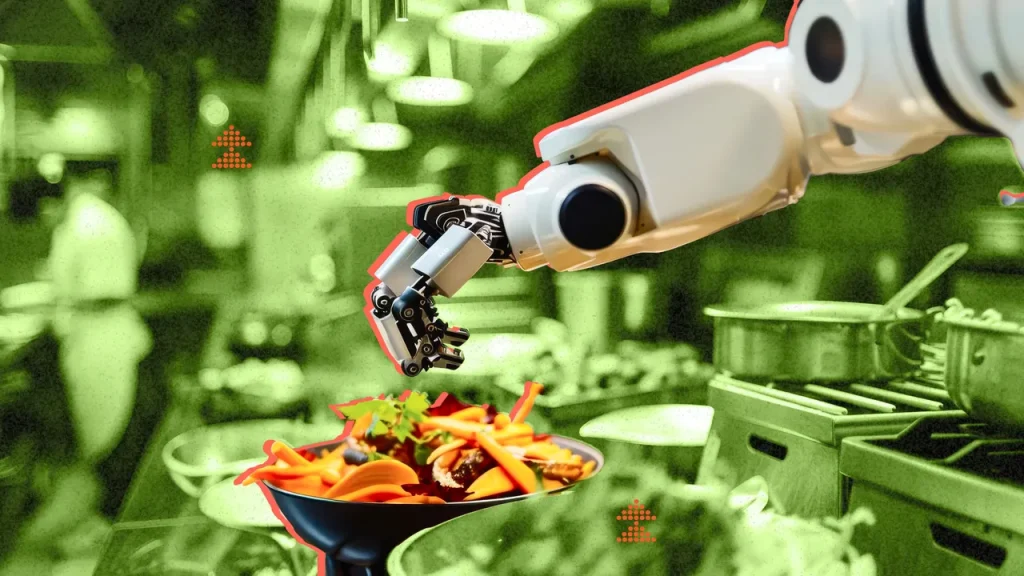
Moreover, this technology enables the creation of innovative products, formulations, and sensory experiences, pushing the boundaries of what we know and love about food. From ingredient sourcing to taste profiles, AI is an invaluable asset in crafting unique and delectable creations.
Unlocking Flavor Frontiers: AI’s Delicacy and Safety
In the realm of culinary innovation, artificial intelligence (AI) has become a powerful tool, revolutionizing the way we approach ingredient discovery and recipe formulation. With its advanced algorithms, AI can identify and suggest novel ingredients, offering a fresh perspective on taste and texture combinations. Moreover, this technology excels at creating allergen-free recipes, ensuring a safe and inclusive culinary experience for all.
One of the remarkable applications of AI in the kitchen is its ability to substitute sugar, salt, and fat without compromising taste. By analyzing flavor profiles and consumer preferences, AI-powered systems can suggest alternative ingredients that maintain the desired taste while promoting healthier eating habits. This “Food Innovation with AI” approach opens up exciting possibilities for both professional chefs and home cooks alike.
Predictive Flavor Profiling and Taste Mapping
The realm of culinary arts is undergoing a transformative shift with the advent of Food Innovation with AI. This cutting-edge technology allows for a whole new level of flavor profiling and taste mapping. Through predictive analytics, AI can anticipate the success or failure of various ingredient combinations, offering an innovative approach to cooking.
By employing machine learning models, chefs and food developers can efficiently pair flavors, unlocking new taste experiences. Generative AI takes this a step further, creating unique and unexpected flavor combinations that push the boundaries of gastronomy. This exciting fusion of technology and cuisine opens up a world of possibilities for culinary enthusiasts.
Unlocking Culinary Creativity: AI’s Impact on Personalized Nutrition
The world of Nutritional Recommendations is evolving with the integration of Food Innovation with AI. Automated recipe generation takes cooking to a new level, offering personalized meal plans tailored to individual tastes and dietary requirements. These AI-powered chefs learn from your preferences, ensuring every dish is a masterpiece. With their nutrient-aware and taste-savvy algorithms, they adapt to your unique needs, creating a culinary experience that is both delicious and nourishing. This innovative approach to cooking brings a fresh and exciting dimension to the kitchen, making every meal a personalized adventure.
It’s an exciting time for food enthusiasts, as AI continues to revolutionize the way we approach nutrition and cuisine.
The Future of Food Textures: AI Revolutionizes Culinary Experiences:
The realm of culinary delights is undergoing a transformative journey with the aid of Food Innovation with AI. Beyond taste, the texture and mouthfeel of food play a pivotal role in the overall dining experience. AI technology has unlocked a new dimension, simulating and optimizing chewiness, crispiness, and creaminess to perfection. This innovation is particularly beneficial for special dietary needs, catering to the elderly, infants, and those with medical considerations. With AI’s precision, the culinary world can now craft tailored textures, ensuring every bite is a delightful adventure.
Unveiling the Future of Culinary Technology
Step into the realm of food innovation with AI, where kitchen appliances transcend their traditional roles. These devices are not just tools but intelligent assistants, equipped with an extraordinary ability to learn and adapt. Imagine an oven that understands your unique cooking preferences, adjusting temperatures and timing with precision. The smart fridge, a culinary companion, suggests meals based on your preferences and the ingredients at hand.
This technological advancement in the kitchen is a game-changer, revolutionizing the way we approach meal preparation. With AI-powered meal planning, the process becomes seamless and tailored to individual tastes. It’s an exciting era where technology and cuisine merge, offering a glimpse into a future where culinary creations are limitless.
Unlocking Sustainable Food Packaging with AI Innovation
Food Innovation with AI is revolutionizing the way we package and preserve our food. Through intelligent design, we can create eco-conscious solutions that enhance both sustainability and functionality. By leveraging AI, we can optimize shelf life and freshness indicators, ensuring our food stays delicious and safe for longer. This technology allows us to design innovative, biodegradable materials, reducing our environmental impact and promoting a greener future. With AI-driven packaging, we can revolutionize the food industry, offering consumers a more sustainable and enjoyable experience. Let’s embrace this exciting innovation and lead the way towards a brighter, eco-friendly future.
Revolutionizing Food Trends with AI
AI technology is transforming the food industry, enabling businesses to stay ahead of the curve and predict the next big culinary trends. With advanced NLP tools, companies can analyze reviews, menus, and social media platforms to identify emerging patterns and consumer preferences. This data-driven approach allows for rapid prototyping of new products, ensuring they align with market demands and preferences. By leveraging Food Innovation with AI, businesses can create unique and appealing offerings, staying at the forefront of the ever-evolving food landscape. Through this innovative process, the food industry is propelled into a new era of culinary excellence and consumer satisfaction.
Unveiling the Future witb Robotics: A Technological Revolution
The fusion of Food Innovation with AI and robotics opens up a whole new realm of culinary possibilities. Imagine a world where robotic chefs, with their precise movements, craft exquisite dishes, pushing the boundaries of experimental cuisine. These culinary robots, guided by the power of artificial intelligence, bring a new level of precision to plating, ensuring every meal is a masterpiece.
Furthermore, the advent of 3D food printing, fueled by generative AI models, allows for the creation of intricate and innovative culinary designs, transforming the way we think about food preparation and presentation. This technological advancement not only enhances the dining experience but also paves the way for a more sustainable and efficient culinary future.
Future of Foods: AI’s Impact on Culinary Frontiers
In the ever-evolving landscape of culinary arts, we witness the emergence of real-world pioneers who harness the power of AI to revolutionize the way we experience food. Companies like NotCo, Climax Foods, and the innovative Gastrograph AI are at the forefront, showcasing the immense potential of food innovation with artificial intelligence. These trailblazers are not alone; even industry giants such as Nestlé and PepsiCo recognize the value of AI in research and development, propelling them towards a new era of culinary excellence. With each passing day, these brands are crafting a future where AI-driven culinary creations captivate our senses and redefine our dining experiences.

Indeed, the collaboration between human creativity and artificial intelligence is giving rise to unprecedented flavors, textures, and nutritional profiles that were once unimaginable. By analyzing vast datasets of ingredients and sensory preferences, AI enables these companies to predict consumer tastes more accurately and develop products that align with evolving dietary trends and sustainability goals.
The Double-Edged Sword of AI in Culinary Arts
The integration of AI in the culinary world offers a plethora of possibilities, but it also presents unique challenges and ethical considerations. One of the key concerns revolves around the potential for bias in training data, which could inadvertently influence the creation of recipes and thus, the representation of diverse palates.
When it comes to the intellectual property of AI-generated recipes, questions arise regarding ownership and the potential for exploitation. Food Innovation with AI is an exciting frontier, but it requires careful navigation to ensure fairness and ethical practices.
As we explore this new realm, we must remain vigilant, ensuring that the benefits of AI in the culinary arts do not overshadow the need for transparency and ethical standards. Moreover, the reliance on AI to curate flavors and cooking techniques risks diminishing the cultural significance and human intuition embedded in traditional cuisines. Striking a balance between innovation and preservation is essential to maintain the authenticity and heritage that food represents across different societies.








